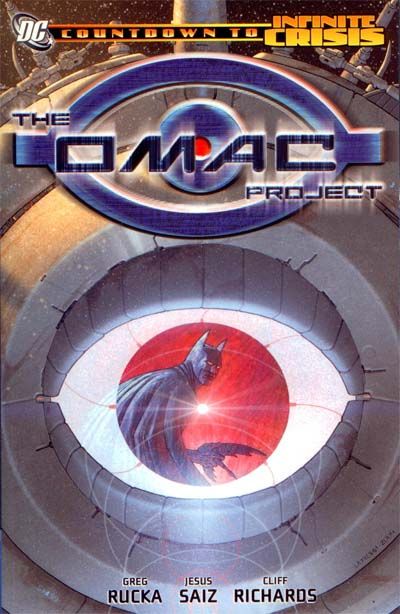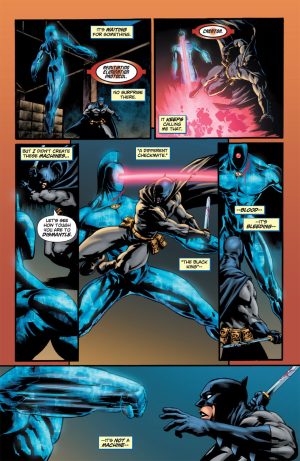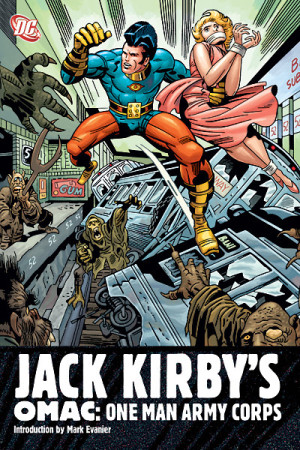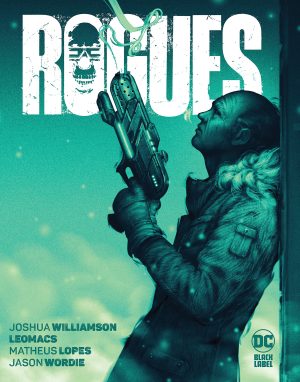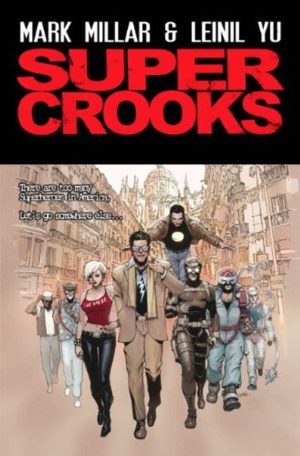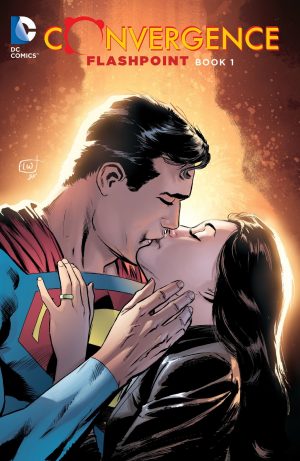Review by Ian Keogh
Years after the DC continuity it connected with, reading The Omac Project is a disconcerting experience, but one elevating the shocking sequences.
It begins with a protracted spotlight on Blue Beetle, then Ted Kord, investigating who’s been siphoning money from his company funds. Geoff Johns, Greg Rucka and Judd Winick share the writing on the extended prologue proving Beetle more competent than other superheroes believe, and eventually tracking down something far bigger than imagined. Sequences tying into other projects DC were cross-promoting intrude now as they did in 2005, but Beetle following the mystery is compelling, and drawn by DC’s top artists of the time.
When the curtain’s pulled back Rucka becomes the sole writer and the focus turns to Checkmate, a security agency intended to protect, but turned into a power base for Maxwell Lord. It’s been revealed Lord knows Bruce Wayne to be Batman, but accessing live time surveillance on the Caped Crusader is a shock. That’s achieved via Omac, an immensely powerful orbiting computer system programmed with the identities of all known superheroes and created by Batman after a fallout with the Justice League about their methods. However, Batman no longer controls Omac, and its capabilities have been considerably enhanced.
Rucka crafts a twisting thriller, with another aspect very apparent in isolation being just how dark DC’s superhero universe became at one point. While these are the characters whose continuity has been followed for decades, they’re sometimes unrecognisable, and that’s not just due to mind control being a plot element. In other ways Rucka is ahead of the times with his agenda of protection over-riding any concerns of accountability and manipulation and deceit in the name of protection being perfectly acceptable. In reality that’s gone on for decades, certainly since Hoover’s FBI, but Rucka reflects the acceleration after 9/11.
Wonder Woman takes a key decision midway through in a chapter again by various artists, some definitely better than others, but Jesús Saíz draws most pages. It’s a complex task presenting digital readouts and chatter alongside investigation and action, and it’s one of the few points where Saíz’s pages now look dated. Otherwise there’s solid storytelling, while toward the end pages pencilled by Cliff Richards are good, but not as dynamic as those from Saíz.
The Wonder Woman chapter activates a sea change, and The Omac Project switches from mystery to the desperate situation of defeating an all-powerful AI privy to secret data and programmed to overcome the weaknesses of individual heroes. What’s more, it can manifest in an instant via proxies anywhere in the world and there’s a reason the heroes can’t fully cut loose when battling them. Rucka keeps escalating the desperation, and the use of Sasha Bordeaux provides a human figure of sympathy amid the superheroes.
Unfortunately, the ending is rushed, convenient and weak, with the final page playing out in Infinite Crisis. Forget that, though, and admire what’s good in a still very readable thriller.
